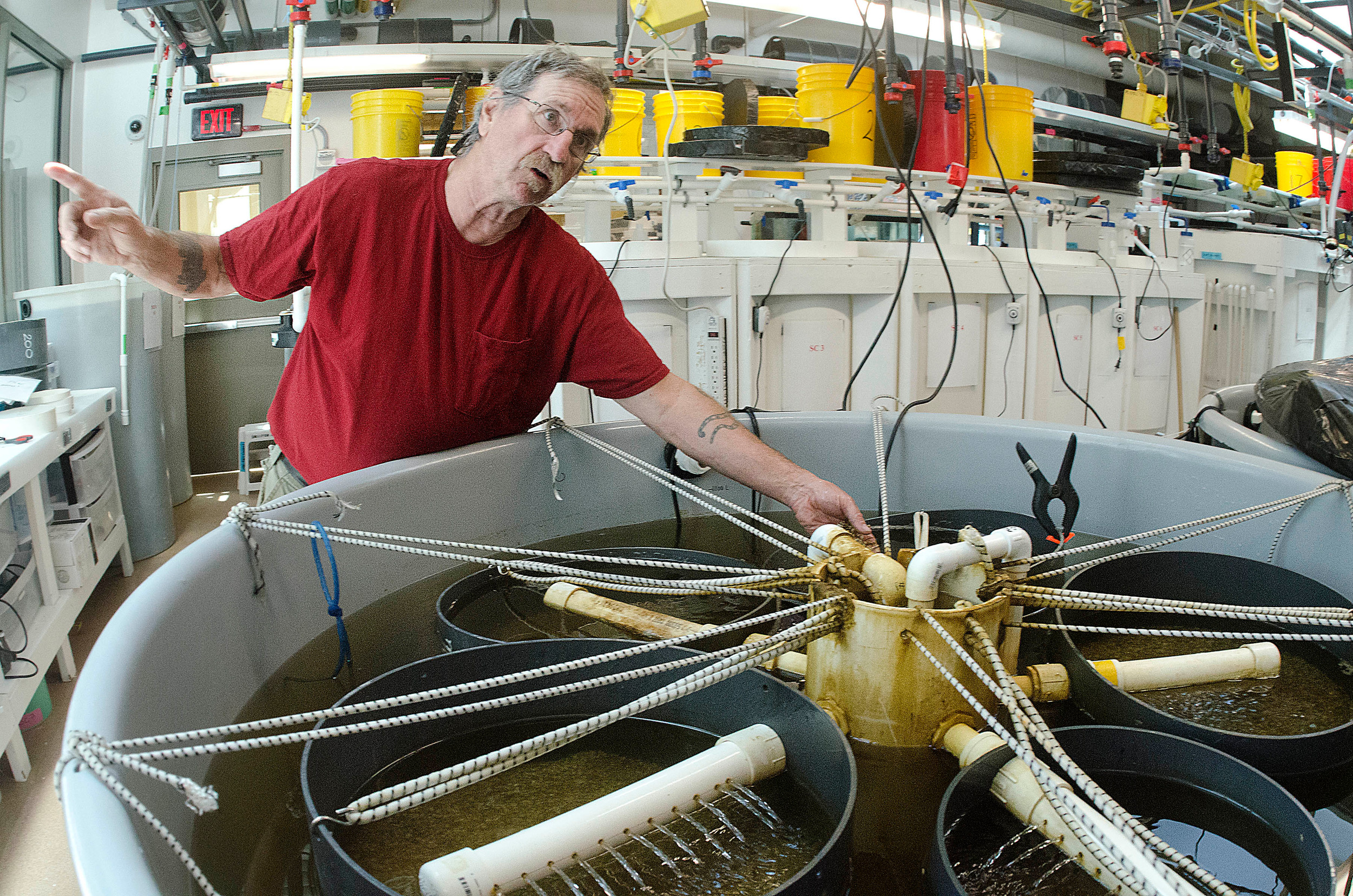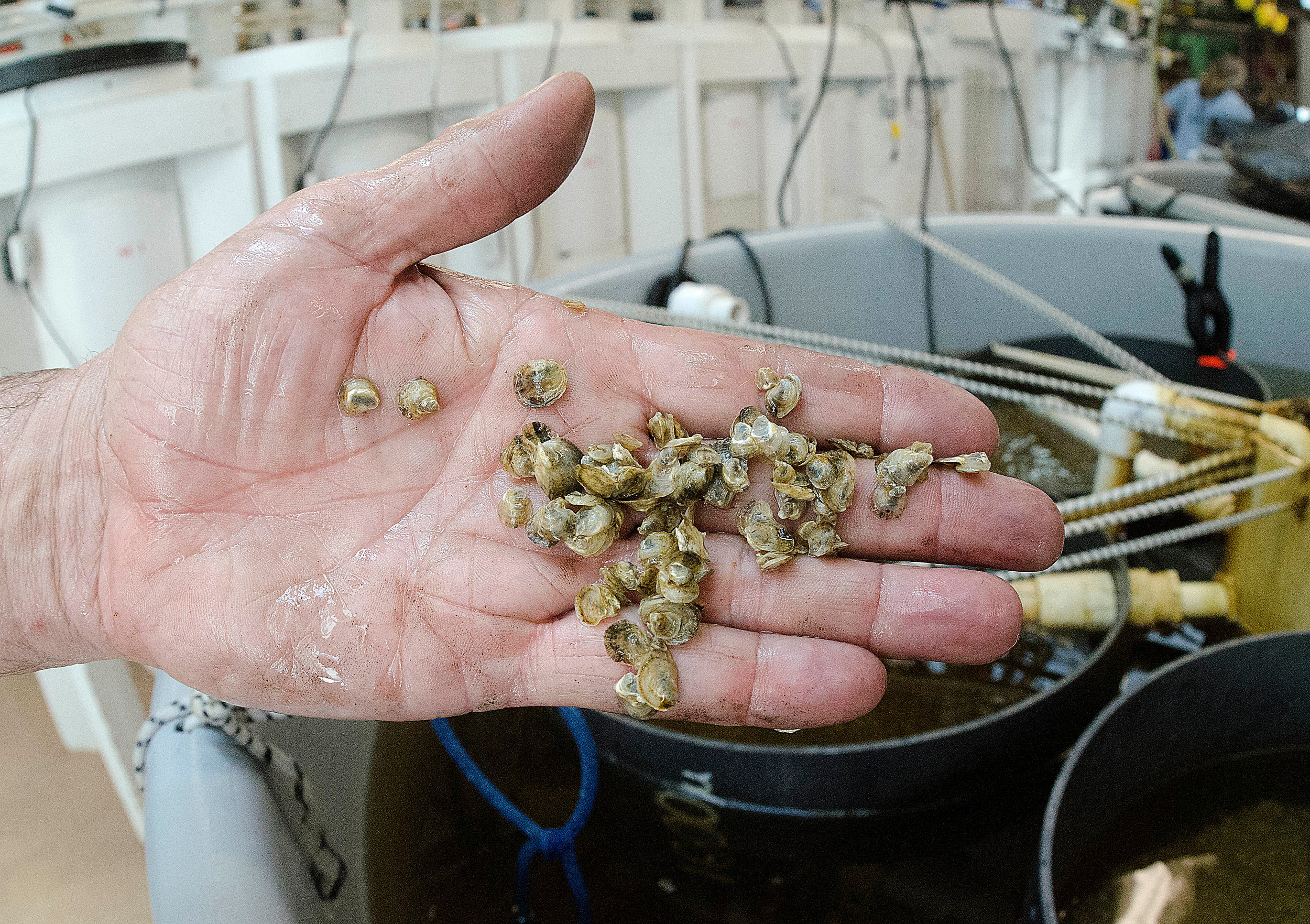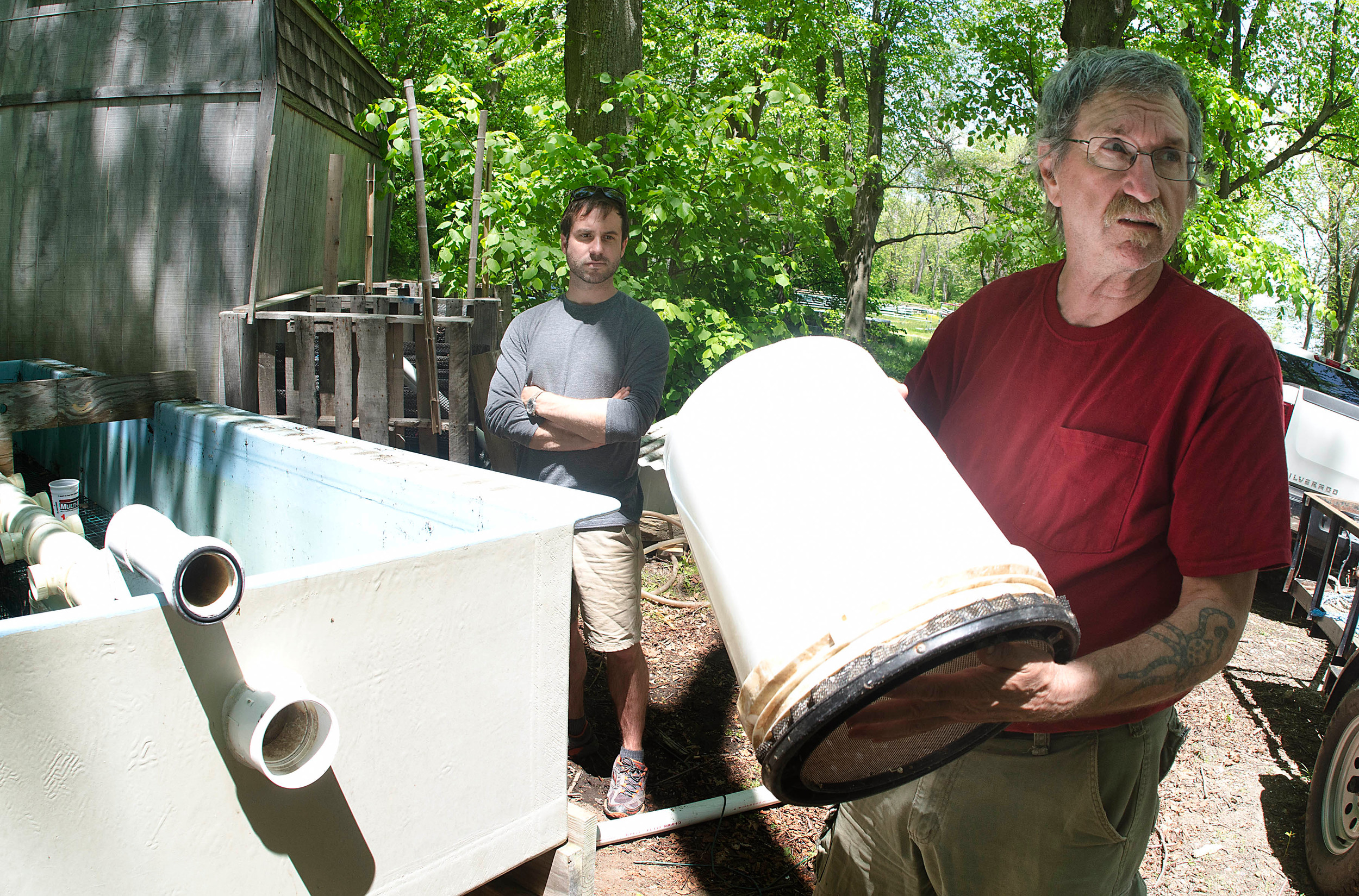Like oysters? Warren first in state to grow for public
Town, RWU join forces to install upweller; plan is to release seed oysters into the bay
They’re little more than tiny grains now. But in a year’s time, many of the 50,000 or more baby oysters bound soon for Warren will be big enough to harvest, waiting to be plucked by …
This item is available in full to subscribers.
Please log in to continue |
Register to post eventsIf you'd like to post an event to our calendar, you can create a free account by clicking here. Note that free accounts do not have access to our subscriber-only content. |
Day pass subscribers
Are you a day pass subscriber who needs to log in? Click here to continue.
Like oysters? Warren first in state to grow for public
Town, RWU join forces to install upweller; plan is to release seed oysters into the bay
They’re little more than tiny grains now. But in a year’s time, many of the 50,000 or more baby oysters bound soon for Warren will be big enough to harvest, waiting to be plucked by hungry seafood lovers at Jacob’s Point, Rumstick Point and along other rocky stretches of upper Narragansett Bay.
The briny, succulent bivalves that once made Warren and other towns across the bay rich have long been gone or mostly gone from Narragansett Bay’s salty dark waters. But later this month, Warren will become the first town in the Ocean State to grow and release oysters for free public consumption, when workers install a large upweller tank at the Warren Town Wharf.
That Warren’s fledgling operation is taking place on a stretch of land made public through the generosity of the late Luther Blount isn’t lost on those town officials eagerly awaiting the project’s arrival:
“Stocking the bay with oysters was Luther’s work,” said Warren Town Council President Joseph DePasquale. “It’s great to continue it on a property he made a reality.”
The project is a joint effort with Roger Williams University, which is supplying both the upweller and seed oysters. Warren provides the space, the power for the upweller’s pump, and the considerable effort it will take to keep the operation running smoothly and cleanly.
The idea is to continually pump nutrient-rich Warren River water over baby oysters, allowing them to quickly grow big enough to “set up” on rocky bay bottoms. When they’re a little less than an inch across (some time this fall), volunteers will remove them and scatter them at several spots in the upper bay. By next summer, those that found purchase and survived predation and the winter will be big enough to pick.
While they’re starting small, the biologists helping Warren get the project off the ground say the upweller could potentially support as many as a quarter million seed oysters. Roger Williams University professor Dr. Dale Leavitt, an aquaculture specialist who along with shellfish restoration technician Matt Griffin is helping Warren, can’t wait to get started.
“Narragansett Bay is a great place to grow oysters,” he said. “They grow like crazy here. I’m really excited; Warren is unique in that it’s the first” town in which oysters will be seeded in public, harvestable areas.
Woody Kemp thinks big
Warren’s oyster program got its start with Woody Kemp, a lifelong water lover, fisheries advocate and boat builder who serves as chairman of the Warren Harbor Management Commission.
At an ocean festival in Nauset, Mass., two summers ago, he heard about several Cape Cod towns’ public oyster programs. After seeing an upweller that allowed Cape Codders to grow tiny seed oysters to a size big enough to set, he knew Warren had to try something similar. The harbor commission has been working for years on categorizing and detailing every public right of way to the water, and with that project “in great shape” he figured the time was ripe to start looking into an oyster program.
“I brought it up at a meeting and said, ‘The Town Wharf is perfect. What do you think?’”
Commissioners seemed enthusiastic. And the next morning, Warren Harbormaster Ed Cabral called him and said, ‘I have a tank for you.’”
The tank is a several-thousand gallon fiberglass trough about 20 feet long, one of three donated to Roger Williams University’s aquaculture program by a former aquaculture outfit in Westport. It supports a manifold through which bay water is pumped and directed into two dozen modified five gallon buckets. The bottoms are fine mesh, and the water enters from a PVC tube; flow is restricted so that water passes through the bed of oysters and exits out the top of the buckets. The shellfish stay more or less in place while large amounts of water, larger than they’d see in the wild, pass over them on a continual basis.
“This is really an optimal configuration for them to get the best food,” Dr. Leavitt said. “We can really accelerate growth over and above the natural process. We can get (oysters) to market size in 18 to 25 months vs. the natural (time), two to three years.
The tank is currently at the Warren DPW but when all the necessary DEM and CRMC permits are in, it will be installed along the south side of the Warren Town Wharf, pointing perpendicular to the Warren River behind Trafford’s. A normal swimming pool pump will be used to draw in water, and the waiting will begin.
Mr. Cabral, who worked at DEM for years, said permitting should be wrapped up by next month, and provisions are being made to help find volunteers to clean the tanks, which must be done three times a week. Shellfishermen and others have agreed to help spread the oysters when they’re large enough.
Though he doesn’t know how many will take, Dr. Leavitt said the oysters will likely be spread in late October, after the bay has started cooling. That will help keep them safe from crab and tautog predation heading into the winter.
“We’re very hopeful” that a lot will take, he said.
Education
Apart from the chance to help restore a historic fishery, those behind the project say they’re excited for the educational opportunities it presents.
Mr. Kemp said he wants to bring local schoolchildren down to the upweller tank to see the seed oysters firsthand. They’ll learn about biology, the miracle of Narragansett Bay and traditional ways of life, he said, and he can’t wait to see the response.
“This is perfect for the schools, for local youth organizations, Scouting,” he said. “This is a huge opportunity. A large component of this is education. If you don’t teach the younger generation to fish and dig clams, they’re going to think the only place to get them is the grocery store.”














